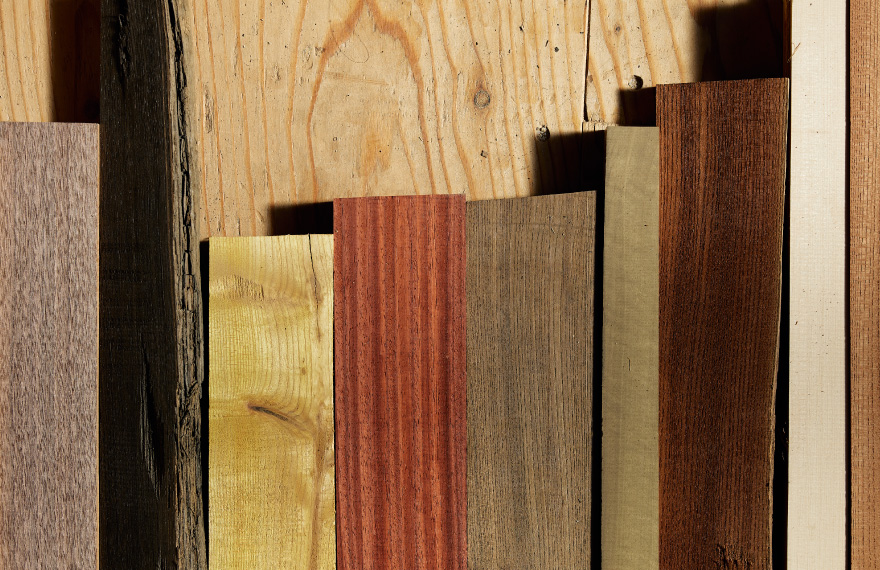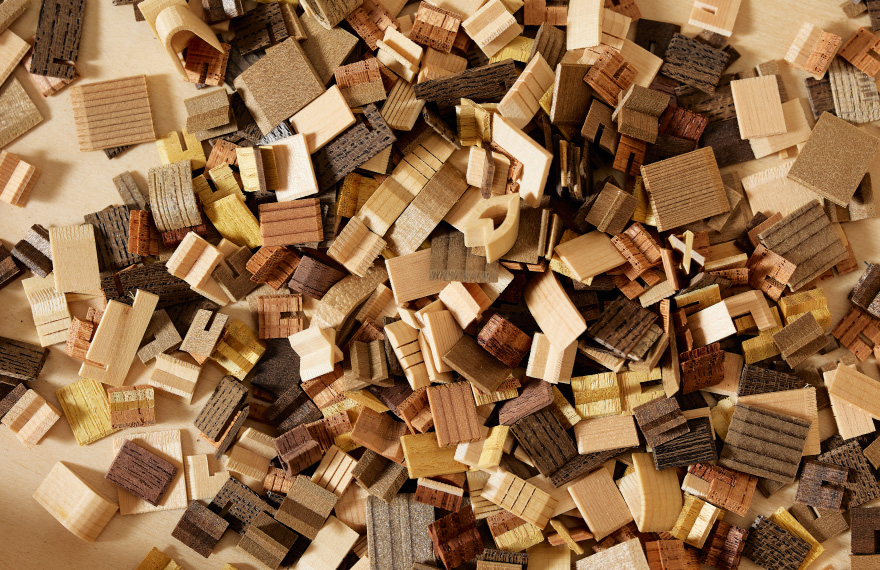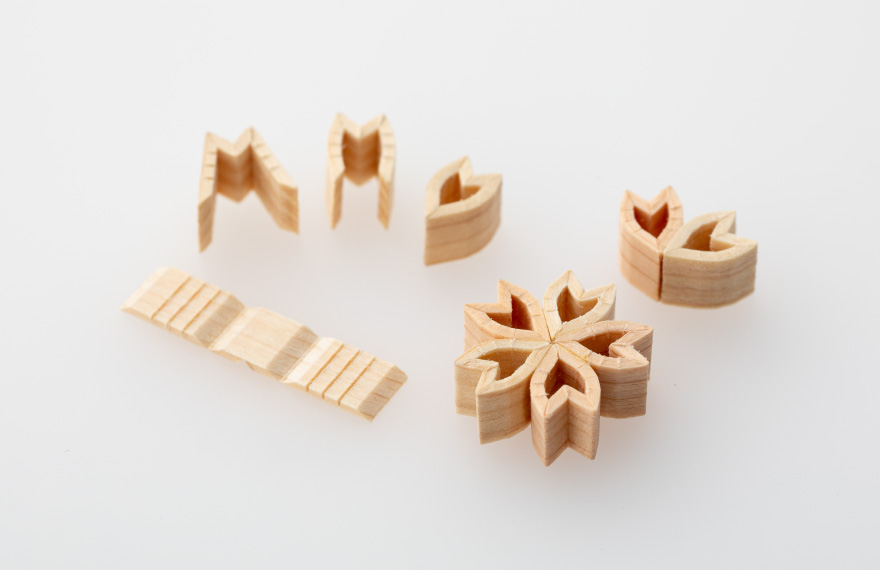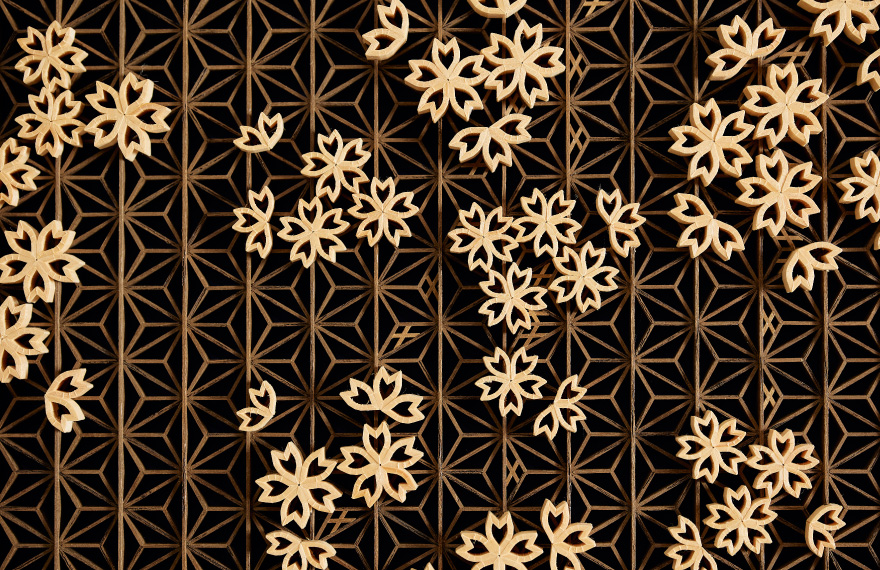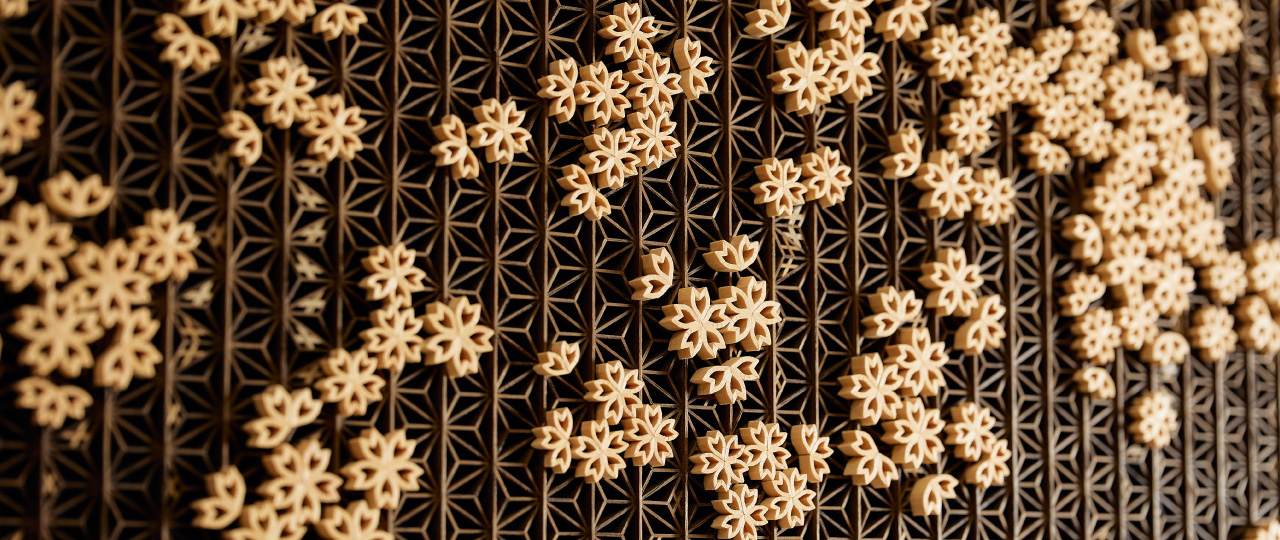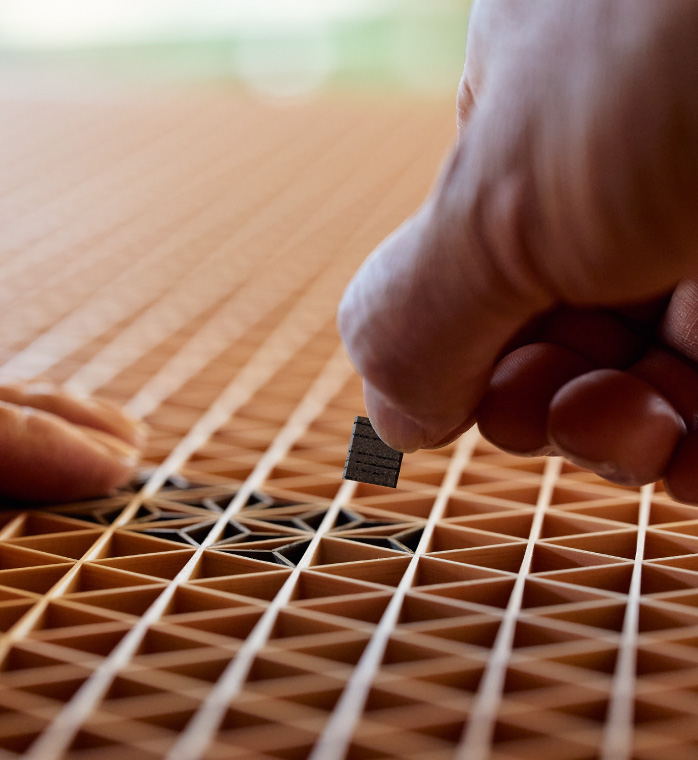
Shiozawa Kumiko uses the natural color of the wood as it is.
The expression of Kumiko consists mainly of geometric patterns, and there are about 250 different ways of assembling them.
Shiozawa Kumiko’s feature is to keep fabricating the traditional Kumiko to a minimum size, and embody them like paintings. In order to create a painting-like expression, the more detailed the image, the more delicate it can be, just like the picture quality of a TV set. Therefore, each part, including the groundwork, is assembled one by one with tweezers, using 50,000 to 80,000 parts for a single work, and as many as 150,000 parts for a large work.
Another key to creating a painting-like effect is color.
Generally, Kumiko works are designed by assembling geometric patterns with a single type of wood. However, Shiozawa Kumiko offers 32 different types of wood in 32 different colors, keeping the natural color of the wood. We decide which wood to use where according to the color of the design, and express it with 5 to 10 different colors of wood in one product. There is a special type of wood called “Jindai” that has been buried in the ground for more than 1000 years. Jindai is pyroclastic flow-fallen tree from the eruption of Mt Chokai in Akita Prefecture, which occurred around 2500 years ago. These valuable woods are called “Jindai-Ceder” and “Jindai-Zelkova”
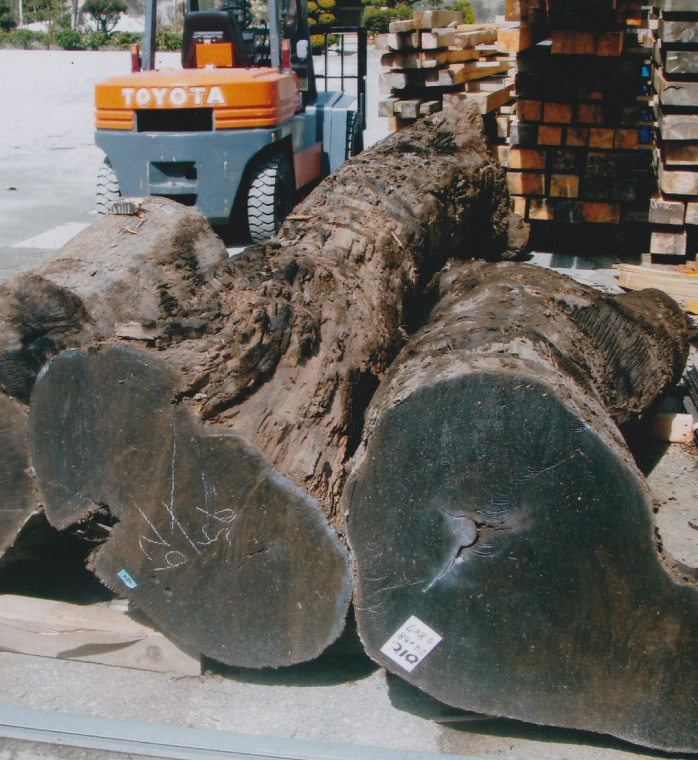 The surface of these special timber is light colored brown when it is freshly sawed, but because of the aerial oxidation it turns light blue in 30 minutes and black in an hour. Toyama prefecture and Hokkaido also have “Jindai” and the black color varies depend on the place of origin. There is also a gray Jindai that was buried in a swamp for 1200 years. Different types of wood have different hardness and stickiness, and have their own advantages and disadvantages.
Besides processing technique, we focus on knowing wood’s character. If we do not understand wood’s each character, we can’t process them adjusting to micrometer size which wood pieces goes up to hundreds of thousands to complete one product.
The surface of these special timber is light colored brown when it is freshly sawed, but because of the aerial oxidation it turns light blue in 30 minutes and black in an hour. Toyama prefecture and Hokkaido also have “Jindai” and the black color varies depend on the place of origin. There is also a gray Jindai that was buried in a swamp for 1200 years. Different types of wood have different hardness and stickiness, and have their own advantages and disadvantages.
Besides processing technique, we focus on knowing wood’s character. If we do not understand wood’s each character, we can’t process them adjusting to micrometer size which wood pieces goes up to hundreds of thousands to complete one product.
Composing the ONLY ONE Kumiko in the world.
The most important thing is to make customer happy. We design variations to suit the customer’s needs. We go to meet in person if we need, and sketch design until the customer fully satisfy. We compose the ONLY ONE Kumiko in the world. Every customer is looking forward how this sketch design changes to Kumiko product, how they express it. And when the product is completed, we are happy to hear they say “I am so surprised of the detail expression! Look at these shadows! The more you see, the charm increases!”
They introduce us to their friends and also order more products.
A new technology of my own invention
Producing Kumiko requires traditional technics, besides it, I invented new technology. I love cherry blossoms and every spring I enjoy it. I started thinking about how to express Cherry blossoms- Sakura by Kumiko. There is a traditional technology called Sakura-pattern. But it doesn’t look like Sakura itself. I wanted to invent a Kumiko which everyone can recognize it at a glance. I made my dream come true 12 years ago, it took 2 years to invent the jigs – advice for how to mark and cut Kumiko pattern pieces – and the tools.
Sakura- Kumiko which use a special saw, need to process 11 parts for expressing just one Sakura petal. I conduct this operation at night as this work requires concentration. Making full use of Sakura-Kumiko’s technic, I challenged to make Wisteria flower–Fuji. Fuji-Kumiko require processing 23 parts which is the hardest work for my Kumiko products.
I use an essential glue for Sakura-Kumiko and Fuji-Kumiko, but mostly I do not use glue for my Kumiko products. Woods shrinks when it dries. As I do not use glues, the shrinkage effects the product after it is completed. So, I take a special care for wooden dry. I only use woods which are air-dried for 10 years, and I take another special care to make their moisture contents down to 2 to 3%. The reason why I do not use glue is the change of the color of glues usage. As we didn’t have glue in the past and Kumiko’s technology was established and I want to adhere these traditional skills.

 The surface of these special timber is light colored brown when it is freshly sawed, but because of the aerial oxidation it turns light blue in 30 minutes and black in an hour. Toyama prefecture and Hokkaido also have “Jindai” and the black color varies depend on the place of origin. There is also a gray Jindai that was buried in a swamp for 1200 years. Different types of wood have different hardness and stickiness, and have their own advantages and disadvantages.
Besides processing technique, we focus on knowing wood’s character. If we do not understand wood’s each character, we can’t process them adjusting to micrometer size which wood pieces goes up to hundreds of thousands to complete one product.
The surface of these special timber is light colored brown when it is freshly sawed, but because of the aerial oxidation it turns light blue in 30 minutes and black in an hour. Toyama prefecture and Hokkaido also have “Jindai” and the black color varies depend on the place of origin. There is also a gray Jindai that was buried in a swamp for 1200 years. Different types of wood have different hardness and stickiness, and have their own advantages and disadvantages.
Besides processing technique, we focus on knowing wood’s character. If we do not understand wood’s each character, we can’t process them adjusting to micrometer size which wood pieces goes up to hundreds of thousands to complete one product.
